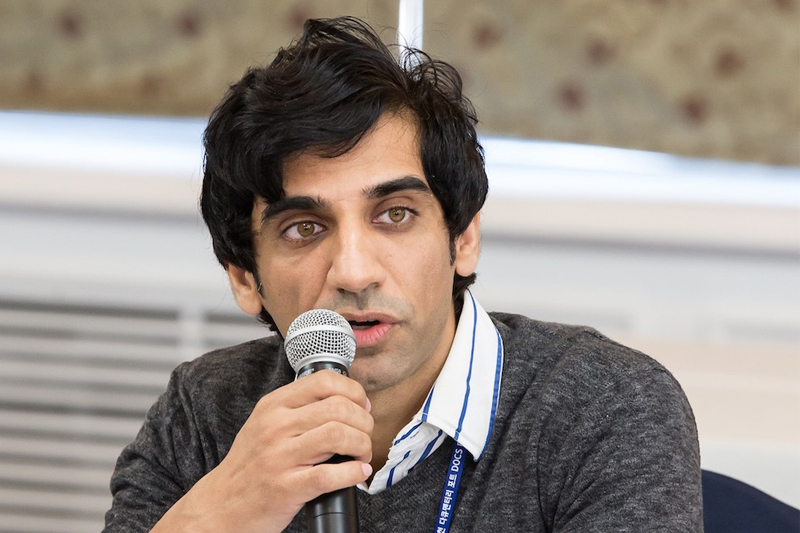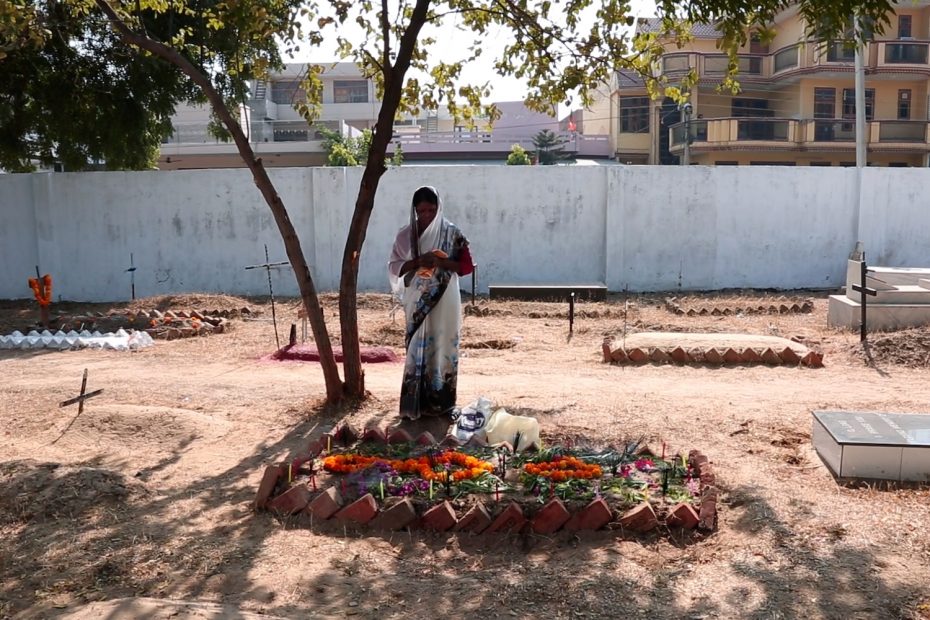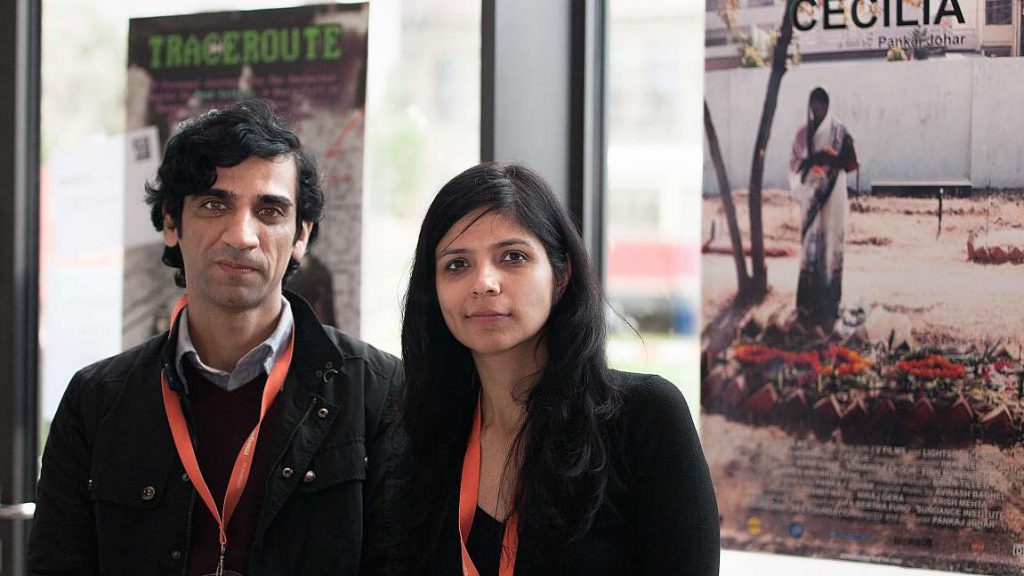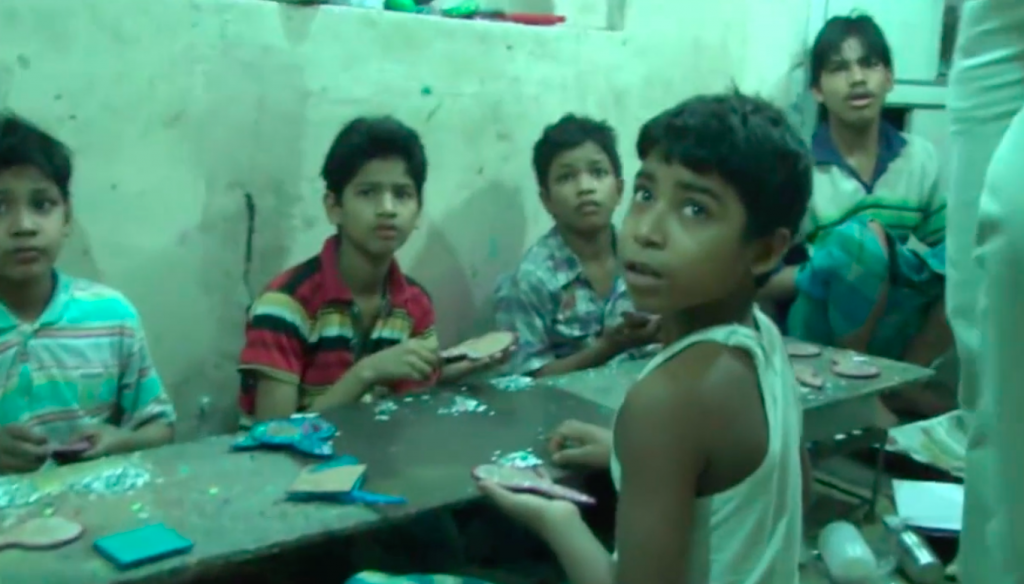
Pankaj Johar’s documentaries look at social issues through intensely personal experiences. Ask him about his inspiration in life, and pat comes the response, “My father,” who is the subject of his first documentary, Standing Still. His second documentary, Cecilia, premiered at the International Documentary Filmfestival Amsterdam (IDFA) in 2015, and has since won the Best Documentary award at the Stuttgart Indian Film Festival (2016) and travelled from Norway to Argentina. Exploring the director’s journey, we get talking to Johar about Cecilia and filmmaking beyond the norms.
The Beginning
Johar studied finance, but films were always his first love. He got together with his friend Hemant Gaba, both quit their steady jobs, and came out with their first film, Shuttlecock Boys. Shot on Super 16, Johar credits the offbeat venture as his film school. The year was 2008, a time when very few films were shot digitally, but after much deliberation, they shot the traditional way, on film. “We put in our own money and borrowed from family and friends,” recalls Johar, but it taught them about technicalities, which the digital format could not have accorded. After a four-year hurdle involving considerable damage to the film’s negatives, they released it in 2012.
He then moved on to work with NDTV and produced political documentaries, which is where his love for documentary films emerged. “While initially it was my love for fiction cinema that prompted me to quit my job, I gradually gravitated – although accidentally – towards documentaries when I realised their power for bringing about a social change.”
Talking about making his father the subject of his first documentary, Still Standing, Johar shares that as a child he was embarrassed to invite his friends home. “After being shot, my father became paralysed neck downward. He was suicidal after his injury because he was a therapist for the challenged, but then he himself became bedridden.” Yet his father fought against the odds and started his own organisation for the physically challenged from his pension. Johar has been filming his father for a decade, but in 2010, he made a fragment film out of the footage he had, a short documentary.
Cecilia
The idea for his next film, Cecilia, sprouted under rather unfortunate circumstances. He and his wife, Sunaina, a lawyer, were living harmoniously with their housekeeper, Cecilia Hasda, when tragedy struck. Hasda’s 14 year-old daughter had been trafficked from the poverty-ridden tribal belt of Northeast India, and found dead in Delhi. Cecilia’s struggle is grippingly interspersed with Johar’s personal narrative, an editing decision that seems sensible considering that the domestic help is the subject, yet her presence as a prism through which one looks at child trafficking does not result in the film taking an activist’s tone. Citing lack of time and inclination to work for the cause, he wanted to move on to documenting another social issue. “There are a lot of activist filmmakers who pursue their role as activists beyond filmmaking, and are doing well, but I was clear that my aim was to use cinema as an outreach tool to create awareness, and not assume the role of an activist.”

Image: idfa.nl; A Still from ‘Cecilia’
Regarding the personal tone of the film, Johar remarks that it is also their journey of coming to terms with their role as consumers of child trafficking. “We are symbolic of countless other middle class Indians who have been hiring young girls from poor families. Usually the intention is to help them and their parents back home, but majority of us do not know how these girls have been coming to Delhi.” He regrets being ignorant of the trafficking nexus, but considers it a transforming phase that has helped him become a better person. “The personal realisation made it important for me and my wife to be characters in the film.” Furthermore, it was one of the many structures that they tried at the editing table, and one that worked the best.Shooting for Cecilia proved singularly challenging. Johar and his crew initially faced resistance from Cecilia’s family and villagers, who were not told that they were being filmed for a documentary. The same held true for the policemen and lawyers involved. There was the added concern of infringing upon Cecilia’s privacy, who was already under mental duress. However, Johar told her what he wanted to achieve with this film, and she gradually accepted it. Yet there were times — during her telephone conversations, or when she was under pressure to drop the investigation — when Johar felt that he was intruding her space.

Image: dokfest-muenchen.de; Pankaj and Sunaina Johar
Cecilia Hasda settled the case out of court under pressure from her husband and villagers. Guilt-ridden for being unable to get justice for her daughter’s death, she returned to her village, took to alcohol, and died of liver complications. The news of her death was saddening for Johar, but not shocking because with the kind of harassment she had endured at the hands of her villagers for over a year, he could tell that she was going to have a difficult time. “We will never know whether someone poisoned her, or if she indeed died of liver cirrhosis. But she will always have a special place in our lives, and so will this film. Not because it was my first feature-length documentary, but because of what those two and a half years taught me about our society and the kind of ignorant and shallow lives we live.”
No Country for Documentaries
Talking about the viewership of documentaries in India, Johar believes there is still a long way to go before we become a documentary-watching nation. “There is only a niche audience for these films. Even if there is an award-winning documentary such as Cinema Travellers next to a Salman Khan film, 99 percent of the people would pay to watch the latter.”
He is, however, more optimistic with regard to Indian filmmakers experimenting with the documentary format. “I think there couldn’t be a better time.” He adds that if your film has a strong subject, getting foreign funding is a lot easier as compared to a fiction film. “In India, however, there are only two government bodies – Public Service Broadcasting Trust (PSBT) and Film Division of India – and even their funds have been curtailed since the present government came to power.” Johar further laments, “They take all the rights of the film; it becomes their property. In a country where there is so much money for Bollywood, I believe there should be an initiative to fund strong social subjects.”
Marching Forward

Image: thewhy.dk; A Still from the Upcoming Film ‘Why Slavery?’
After Cecilia, the next two projects for Johar are also related to child trafficking. One is Why Slavery? — a six-part anthology that documents instances of modern slavery across the world. The other is a biopic on child rights activist and Nobel laureate, Kailash Satyarthi, with Films Division of India. Engaging with the same dark subject for the last 3 to 4 years has been an emotionally draining experience for the filmmaker, who finds it “difficult to come home after the shoot and its baggage.” His future plans include moving on to something “lighter” — a documentary on the vidyapeeths of Varanasi. “There are multiple layers to the film,” he reveals, “but there are kids in it and it’s always fun to be around them.”
With the future of an entire generation of children in peril because of bonded labour, we cannot help but hope that documentary films succeed in enlightening the masses about social evils they conveniently ignore.
Disclaimer: The opinions expressed in this feature are those of the interviewee and do not necessarily reflect those of DSSC & its affiliates.
Featured Image Courtesy: hindustantimes.com

